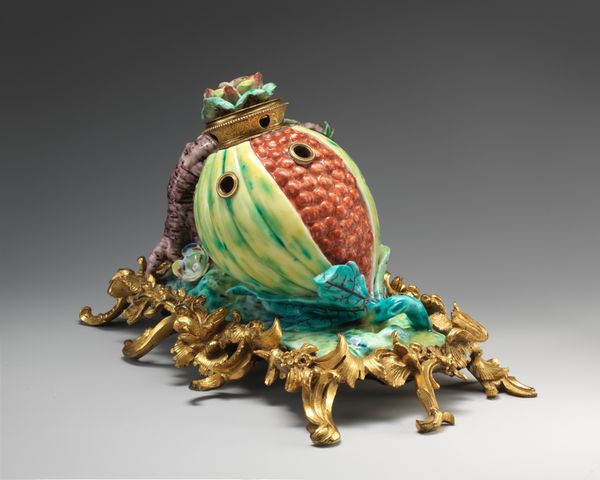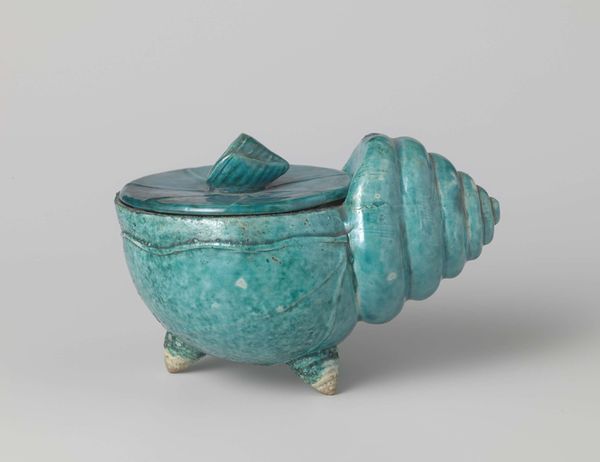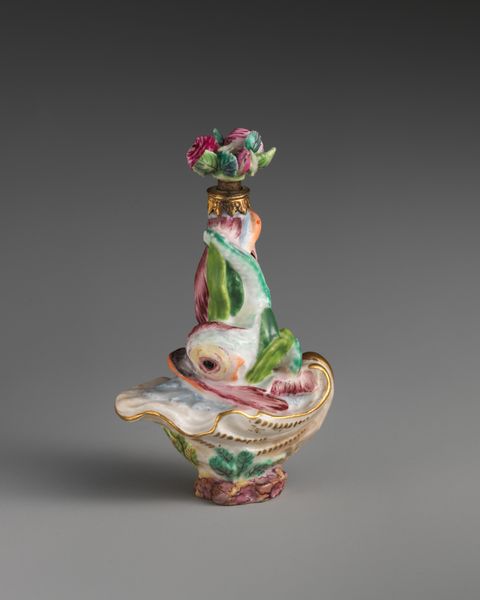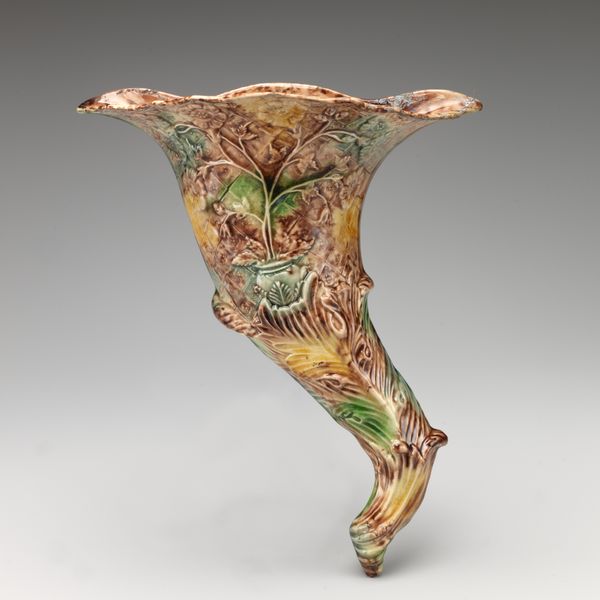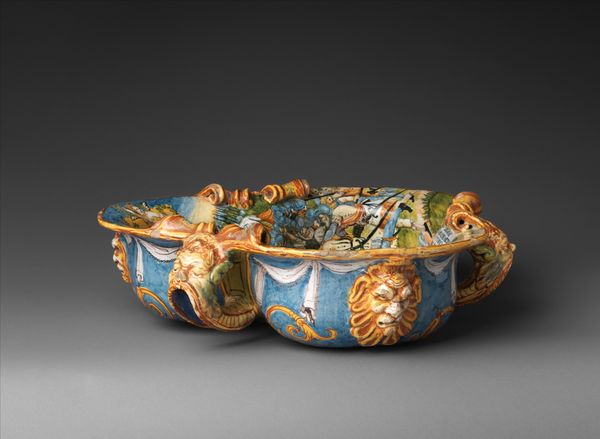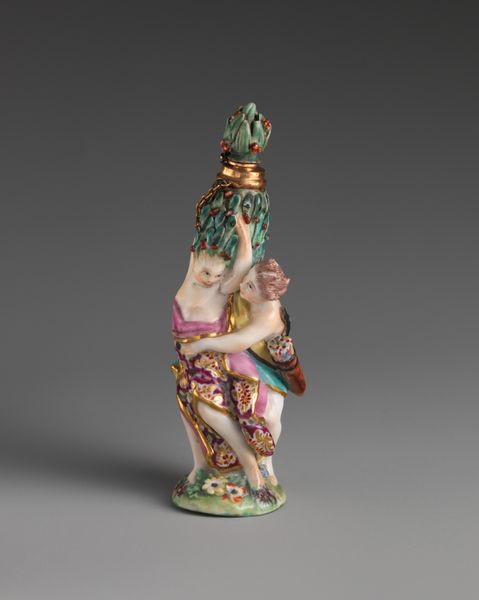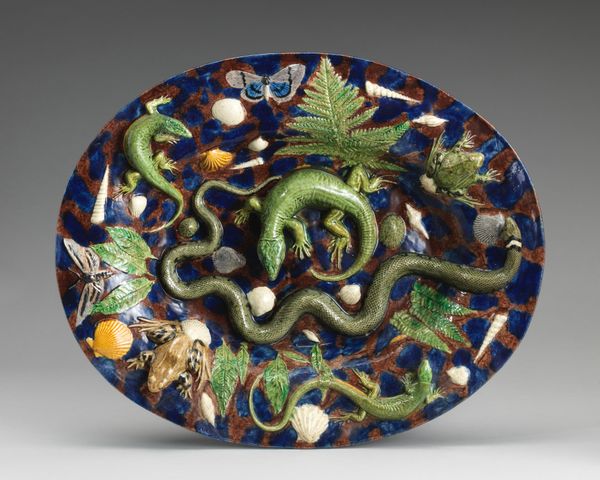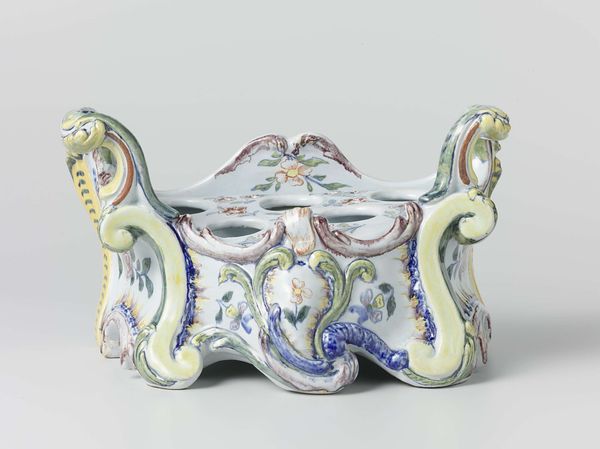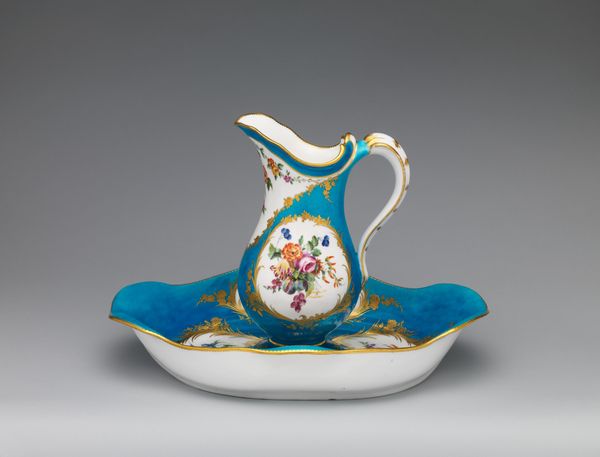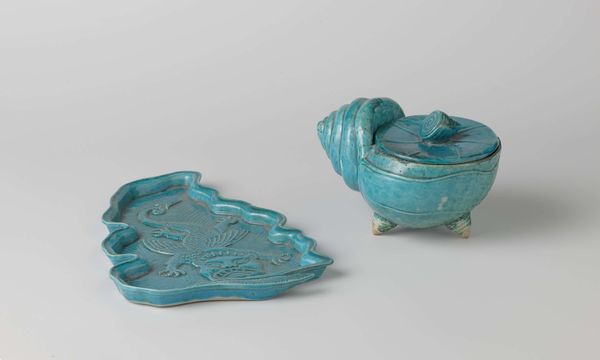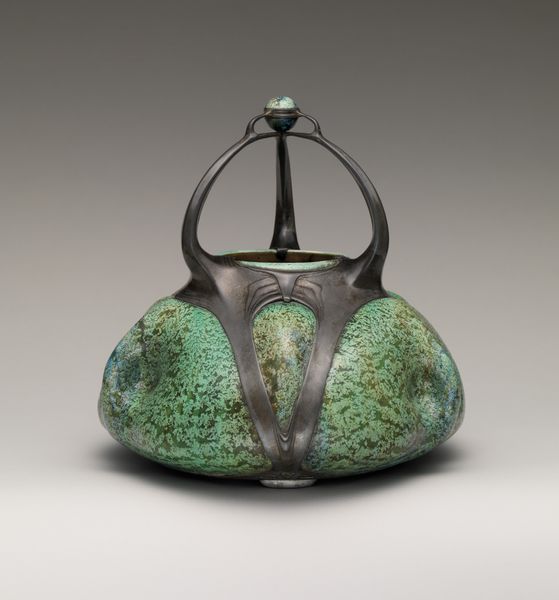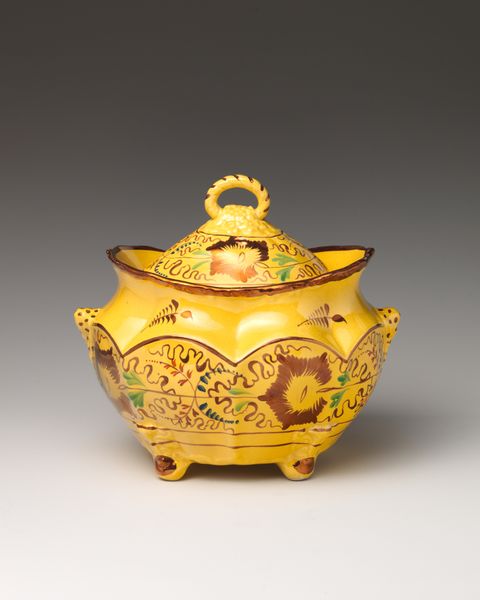
Dimensions: Width: 11 in. (27.9 cm)
Copyright: Public Domain
Curator: Take a look at this "Basket", a ceramic sculpture created in 1868 by Albert-Ernest Carrier-Belleuse. You can find it here at the Metropolitan Museum of Art. What's your immediate impression? Editor: My eye is immediately drawn to the pastel hues and the delicate, almost fussy detail. It's got that Rococo vibe, very decorative, and seems like the kind of object made to be admired, perhaps even shown off a little. Curator: Precisely! Carrier-Belleuse was a master of decorative arts, deeply influenced by the Rococo revival that swept through Europe. Notice the intertwined latticework, how it is constructed to resemble basket weaving, emphasizing the skillful craftsmanship involved. He wasn’t just creating forms but manipulating material. Editor: The cherubic figures on either side—their pudgy forms practically overflowing. They strike me as quite idealised, almost aggressively innocent. I wonder about their function beyond ornamentation; it is perhaps alluding to a certain period, a time of frivolous and fantastical excess? Curator: You're right, these figures were often used symbolically in the 19th century to evoke nostalgia and classical allusions, while the use of ceramic here bridges the gap between fine art and industrial production, since he worked extensively with factories. We could reflect on how an object like this contributes to the period's notions of domesticity, luxury, and even status. Editor: Thinking about that context really reshapes my understanding. The sculpture is not just pretty, but communicates a set of social values and aspirations to a very particular viewership in the nineteenth century. Was Carrier-Belleuse aiming for mass appeal with his art? Curator: Indeed. This period witnesses the professionalisation of the art market, which provided Carrier-Belleuse a space to explore accessible luxury and refined taste, by creating these sculptures. The 'Basket' exists as a tangible expression of complex intersections between aesthetics, economics, and social practices. Editor: It’s fascinating to think about this decorative basket as an active player in the social games of its time, not just a passive, pretty object. I definitely view it in a fresh light now. Curator: And, considering its presence here in the Met, within the larger context of its decorative art collection, how do its presentation and display continue to shape the meanings it holds for today’s museum visitors? A decorative object from another age.
Comments
No comments
Be the first to comment and join the conversation on the ultimate creative platform.
